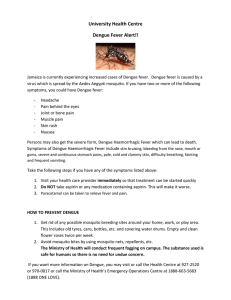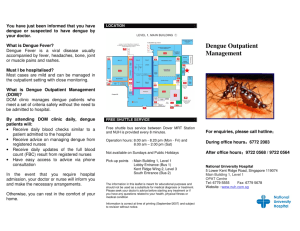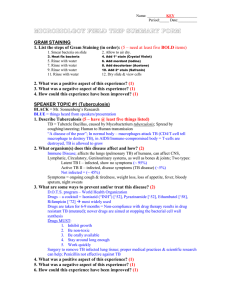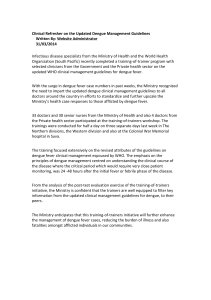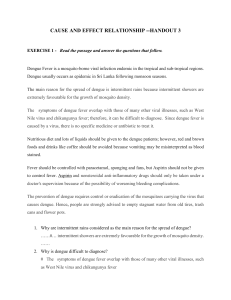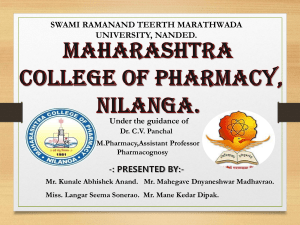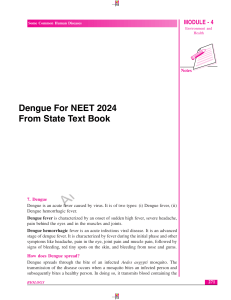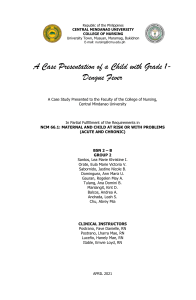Dengue Fever in Pediatric Patients: Symptoms, Diagnosis & Treatment
advertisement
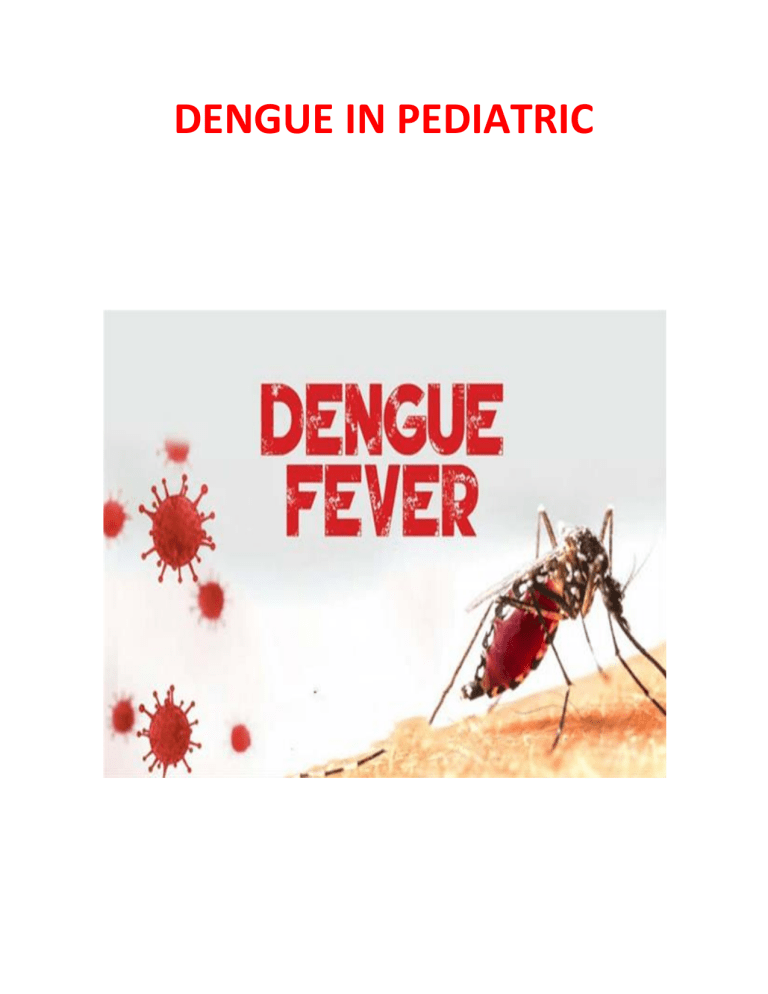
DENGUE IN PEDIATRIC Introduction • Acute Viral infection cause Biphasic Fever with Hemorrhagic Rash and characteristic Thrombocytopenia. • Also Known as Break Bone Fever. • The vast majority of dengue cases are children less than 15 years of age. Dengue causes a spectrum of illness from mild fever to severe disease with plasma leakage and shock • WHO currently estimates there may be 50 million cases of dengue infection worldwide every year. • Dengue fever is an acute febrile disease, endemic in tropics, caused by four closely related Dengue viruses 1,2,3,4 of Flaviviridae family. • It is transmitted to humans by the Aedes Aegypti mosquito, which unlike the malaria causing mosquito Anopheles feeds only during the day. • The disease is now spreading internationally. • Dengue is not contagious. It spreads only through the bite of an infected mosquito. Incubation Period : 1 to 7 days Mode of Transmission Pathophysiology Symptoms in Different Phase Types Diagnosis • CBC with increased Lymphocytes and reduced thrombocytopenia (S100,000/mm³) • NS-1 Antibody • Dengue Antibody test - IgM • Hematocrit increased >20% • Pleural Effusion (by chest radiograph) • Hypoalbuminemia Vaccine • World's first dengue vaccine was invented in Spain's Saint Louis University and Mexico was the first country to approve it. • However, India has not approved any dengue vaccine produced by other countries so far. Prevention • Prevention of mosquito bite • Use mosquito proof net for sleeping • Use mosquito repellent ointments Curative Treatment • Antimicrobial therapy - No specific Antiviral treatment but antibiotic may bend for super added bacterial infections • Symptomatic treatment for cough and Fever with Acetaminophene and analgesie • Adequate rest • Adequate nutrition • Adequate hydration for fluid replacement • Fluid Administration - RL (Ringer Lactate), Normal Saline (NS)
